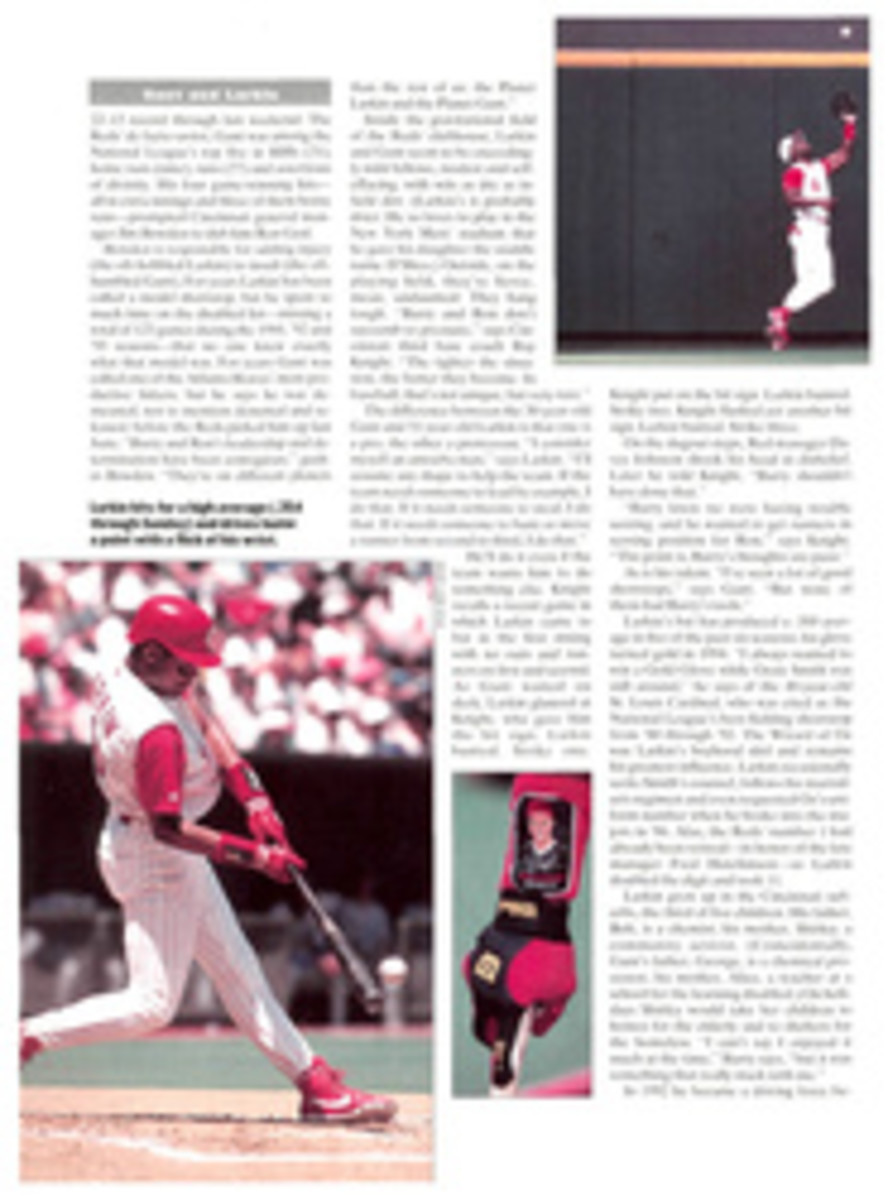
CAUTION: GIRLS AT RISK TOO MUCH IS BEING ASKED OF TOP YOUNG GYMNASTS AND FIGURE SKATERS
Chronic back pain, high-stress work, anxiety about retirement,
fear of weight gain, erratic or nonexistent menstrual periods,
dependence on laxatives, low bone density. The laments of a
55-year-old professional woman? No. Sadly we are talking about
some of the country's most popular young female athletes, and
the above are just some of the problems they encounter as they
struggle to reach the top of their sports and remain there. Joan
Ryan discusses these and other difficulties young athletes face
in her book Little Girls in Pretty Boxes: The Making and
Breaking of Elite Gymnasts and Figure Skaters (Doubleday, $22.95).
The book, published this month, is a detailed condemnation of
the intense physical and mental training that some of these
girls endure. Ryan likens this process to "legal, even
celebrated, child abuse." She aims many of her hardest shots at
gymnastics, and she weaves dozens of heartbreaking tales around
the shocking story of Julissa Gomez, a 15-year-old gymnast who
crashed headfirst into a vaulting horse while practicing a vault
before a meet in 1988. Gomez suffered a broken neck, lapsed into
a coma and died three years later.
This backstage view is a reality check for anyone who has ever
turned on the television and been charmed by these little girls
in bows and makeup competing for gold medals. In the book are
stories about young gymnasts who train with cracked bones,
consume only 1,000 calories a day, pop Advil to dull the pain in
their limbs and get cortisone shots so that they can perform
when they are injured. Ryan also tells stories of figure skaters
who have eating disorders and who overtrain.
Ryan concedes that much of her evidence is anecdotal, gathered
during 10 years as a journalist covering gymnastics and figure
skating for the San Francisco Examiner and Chronicle. However,
the stories she tells seem to confirm what many people who watch
these sports suspect: that encouraging ever younger, ever
smaller girls to stretch the limits of their bodies by
performing ever more difficult jumps, flips and spins is not
healthy for their developing bones or young minds.
According to a 1993 study in the Journal of Pediatrics, a
gymnast who trains more than 18 hours a week in prepubescence
and continues training at that level through puberty can alter
her growth rate and fail to reach her full adult height. Despite
these risks some parents of elite gymnasts allow their daughters
to train an average of 30 hours a week.
Why do otherwise loving parents allow their daughters to
continue participating in gymnastics or figure skating when it
begins to damage their well-being? In Ryan's book Wendie
Grossman, whose daughter was once a dedicated figure skater,
describes the "high" that parents get from having children in
competition: "We became junkies for our kids' success.... You
want more and more, and you push your kids." Another mother was
so bent on her daughter's success that she covered up the young
gymnast's chicken pox so that she could compete in a meet.
The pressure from all sides to win and the way the girls respond
to the pressure are both awesome and frightening. Before the
1991 world gymnastics championships, a stress fracture was
diagnosed in Betty Okino's right elbow. She continued training,
even though doctors told her to stop. "But that wasn't really an
option," she says. "It was like, either you are paralyzed and
you can't move, or you train. No matter what, you went to the
gym." Okino, who retired after winning a bronze medal in the
team event at the 1992 Olympics, cannot fully straighten her arm
today.
Next to injury the biggest fear for these athletes is weight
gain. At 16, national champion figure skater Elaine Zayak found
herself taking prescription diet pills. She weighed only 125
pounds, but her coaches and parents told her that to succeed she
would have to drop the 15 pounds she had gained in puberty. As
U.S. Olympic skating coach Evy Scotvold put it: "As soon as they
have a woman's body, it's over."
Ryan blasts the U.S. Gymnastics Federation (now called USA
Gymnastics) and the U.S. Figure Skating Association for not
doing enough to protect these girls. She suggests that athletes
be required to stay in school full time until they are 16, that
the number of hours they train be limited and that coaches who
encourage them to train when they are injured be disciplined.
Ryan argues that these young performers deserve the same
protection from exploitation that the government provided child
actors decades ago. The best young gymnasts and figure skaters
are marketable stars, and their caretakers are vulnerable to
temptation to profit at the kids' expense.
Susanna Schrobsdorff covered Olympic figure skating for Time
magazine in 1992 and 1994.
COLOR PHOTO:RICK RICKMAN/DUOMO Under Bela Karolyi, Okino chalked up medals and injuries.[Bela Karolyi and Betty Okino]

